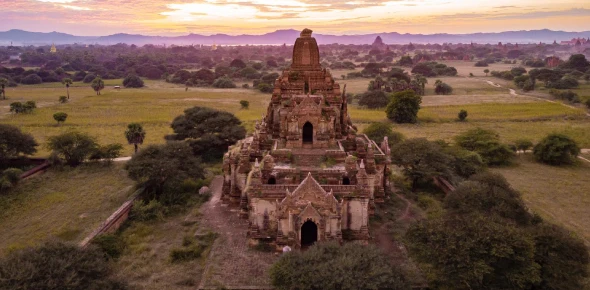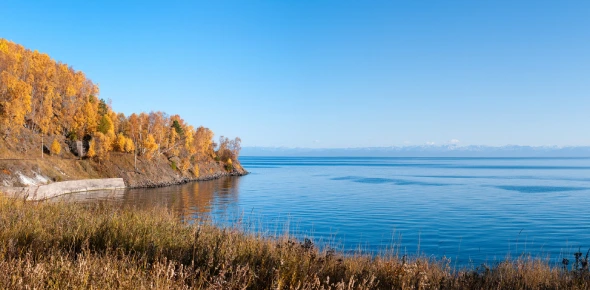World Heritage Day Quiz: Questions With Answers

Celebrate World Heritage Day by testing your knowledge with our 'Heritage Quiz Questions with Answers'. Explore fascinating historical sites, cultural landmarks, and natural wonders from around the globe. This quiz is perfect for history buffs, travel enthusiasts, and anyone who is curious about the world's most treasured places.
From ancient civilizations to modern marvels, this world heritage quiz will challenge your understanding of iconic landmarks and their significance. Since the majority of countries have been through a lot throughout history, they have designated some areas to be untouched or marked as important in their history. Put your Read moreknowledge to the test and see how well you know these global treasures.
World Heritage Day Questions and Answers
- 1.
How many countries have adhered to the World Heritage Convention?
- A.
21
- B.
187
- C.
120
- D.
193
Correct Answer
D. 193Explanation
The correct answer is 193. The World Heritage Convention is an international treaty aimed at preserving cultural and natural sites of outstanding universal value. It was adopted in 1972 and has been ratified by 193 countries. This means that these countries have agreed to adhere to the principles and guidelines set forth by the convention in order to protect and conserve these important sites for future generations.Rate this question:
-
- 2.
Which of these sites is on the World Heritage List?
- A.
- B.
- C.
- D.
All of the above
Correct Answer
D. All of the aboveExplanation
All of the above sites are on the World Heritage List. The World Heritage List is maintained by the United Nations Educational, Scientific and Cultural Organization (UNESCO) and includes sites that are considered to have outstanding universal value. Los Alamos, New Mexico is included on the list for its significance as the birthplace of the atomic bomb and its role in the development of nuclear weapons. Devil's Town, Serbia is included for its unique rock formations and geological features. The Statue of Liberty, located in New York, is included for its cultural and historical significance as a symbol of freedom and democracy.Rate this question:
-
- 3.
What continent has the most World Heritage Sites?
- A.
Asia
- B.
Africa
- C.
Europe
- D.
North America
Correct Answer
C. EuropeExplanation
Europe is the continent with the most UNESCO World Heritage Sites. Europe boasts a rich history, diverse cultures, and extensive contributions to art, architecture, and science, all of which are reflected in its numerous World Heritage Sites. These sites range from historical landmarks in ancient cities, architectural marvels from various stylistic periods, to stunning natural landscapes.Rate this question:
-
- 4.
The Swiss towns of La Chaux-de-Fonds and Le Locle were added to the World Heritage List in 2009 for which cultural distinction?
- A.
Traditional cheese-making
- B.
Their town planning
- C.
A Roman aqueduct
- D.
Twin monasteries
Correct Answer
B. Their town planningExplanation
La Chaux-de-Fonds and Le Locle were added to the World Heritage List in 2009 for their unique watchmaking town planning. These two towns in the Swiss Jura mountains developed a specific urban design in the 18th and 19th centuries that was entirely dedicated to the watchmaking industry. This involved:
Open-ended grid plan: The towns feature parallel strips of buildings that maximized light and facilitated the movement of goods and people essential for watch production.
Integration of housing and workshops: Homes and workshops were intermingled, reflecting the close relationship between the watchmakers' lives and their work.
Specialized buildings: The architecture included structures specifically designed for watchmaking processes, such as workshops with large windows for natural light and factories with efficient layouts for production.
This unique urban planning reflects the deep-rooted watchmaking tradition of the region and how it shaped the social and economic fabric of these communities. La Chaux-de-Fonds and Le Locle serve as a testament to the industrial heritage of watchmaking and its influence on urban development.Rate this question:
-
- 5.
The Late Roman fortified palace compound and memorial complex of Gamzigrad-Romuliana, Palace of Galerius, in the east of Serbia, was commissioned by Emperor Caius Valerius Galerius Maximianus in the late 3rd and early 4th centuries. It was also known as Felix Romuliana, named after
Correct Answer
Emperor's mother, his mother Romula.Explanation
The correct answer is "Emperor's mother." The Late Roman fortified palace compound and memorial complex of Gamzigrad-Romuliana, also known as Felix Romuliana, was named after the Emperor's mother. This suggests that the complex held significance and was dedicated to honoring her. It highlights the importance of family and lineage in the Roman Empire, as well as the power and influence of the Emperor's mother.Rate this question:
- 6.
Only two countries have ever had a World Heritage site removed from the list. What are they?
- A.
Ecuador and Egypt
- B.
China and Lithuania
- C.
Iraq and Laos
- D.
Germany and Oman
Correct Answer
D. Germany and OmanExplanation
Germany and Oman are the correct answer because they are the only two countries that have ever had a World Heritage site removed from the list. This suggests that at some point, Germany and Oman had sites that were deemed to no longer meet the criteria for being a World Heritage site and were subsequently removed.Rate this question:
-
- 7.
Which of the following is a World Heritage site?
- A.
- B.
- C.
- D.
All of the above
Correct Answer
D. All of the aboveExplanation
All of the options mentioned in the question are World Heritage sites. Hiroshima Peace Memorial in Japan is recognized for its historical significance as the first city to suffer from a nuclear attack. Sydney Opera House in Australia is a renowned architectural masterpiece. Sewell Mining Town in Chile is a well-preserved mining town that represents the industrial heritage of the country.Rate this question:
-
- 8.
Name the Pacific island that is home to a World Heritage site containing the world’s largest raised coral atoll.
- A.
Fiji
- B.
Rennell Island
- C.
Rarotonga
- D.
Vanuatu
Correct Answer
B. Rennell IslandExplanation
That would be Rennell Island in the Solomon Islands. This island boasts the largest raised coral atoll in the world, known as East Rennell. It's a unique geological formation, uplifted from the sea by tectonic activity. The island features Lake Tegano, the largest lake in the insular Pacific, which was once the lagoon of the atoll. East Rennell is a UNESCO World Heritage site, recognized for its exceptional natural beauty and biodiversity.Rate this question:
-
- 9.
What does a World Heritage site added in 2006 recognizes in Mexico add?
- A.
The region that produces Tequila
- B.
The Zona Rosa neighborhood of Mexico City
- C.
The bullring in Acapulco.
- D.
Artist Diego Rivera's murals
Correct Answer
A. The region that produces TequilaExplanation
In 2006, a World Heritage site was added in Mexico to recognize its tequila-producing area. This indicates that the site is of significant cultural or natural importance and is recognized internationally for its contribution to the production of tequila. Tequila is a traditional Mexican alcoholic beverage made from the blue agave plant, and the recognition of the tequila-producing area as a World Heritage site highlights its cultural and historical significance in Mexico.Rate this question:
-
- 10.
China's Quioglai and Jiajin Mountains are home to a World Heritage site that protects which endangered animal?
- A.
Red panda
- B.
Snow leopard
- C.
Giant panda
- D.
All the above
Correct Answer
D. All the aboveExplanation
The correct answer is "All the above" because China's Quioglai and Jiajin Mountains are home to a World Heritage site that protects all three endangered animals mentioned: the red panda, snow leopard, and giant panda. These mountains provide a crucial habitat for these species, and the World Heritage site aims to conserve and protect them from further endangerment.Rate this question:
-
- 11.
Charles Darwin visited this UNESCO World Heritage Site consisting of nineteen islands off the coast of Ecuador. The name of this site is _________.
Correct Answer
Galapagos IslandsExplanation
The answer is the Galapagos Islands. This archipelago of volcanic islands in the Pacific Ocean is famed for its unique and diverse wildlife, which inspired Charles Darwin's theory of evolution. The Galapagos Islands are a UNESCO World Heritage Site due to their exceptional biodiversity and the role they played in the development of scientific understanding. Darwin's observations of the variations between species on different islands were crucial to his groundbreaking work, "On the Origin of Species."Rate this question:
- 12.
Located in Indonesia, what UNESCO World Heritage Site is a National Park that derives its name from an island named after a giant lizard?
- A.
Aldabra Atoll
- B.
Komodo National Park
- C.
Niokolo-Koba National Park
- D.
Manú National Park
Correct Answer
B. Komodo National ParkExplanation
Komodo National Park is the correct answer because it is located in Indonesia and is a UNESCO World Heritage Site. The park gets its name from the island of Komodo, which is known for its population of giant lizards called Komodo dragons.Rate this question:
-
- 13.
Which UNESCO World Heritage site is in the picture?
- A.
Historic City of Ayutthaya, Thailand
- B.
Tombs of Buganda Kings at Kasubi
- C.
The Treasury at Petra, Jordan
- D.
Residence of Bukovinian and Dalmatian Metropolitans
Correct Answer
C. The Treasury at Petra, JordanExplanation
The correct answer is The Treasury at Petra, Jordan. The picture shows a stunning structure carved into a rock face, which is a characteristic feature of Petra. The Treasury is one of the most famous and iconic buildings in Petra, known for its intricate façade and historical significance. It was originally built as a tomb for an important Nabatean king and later served as a ceremonial site. Today, it is a popular tourist attraction and a symbol of Jordan's rich cultural heritage.Rate this question:
-
- 14.
What is the Vredefort Dome, a World Heritage Site in South Africa?
- A.
The biggest asteroid impact site in the world
- B.
An 11th-century stadium.
- C.
A historic gold mine.
- D.
A volcanic crater.
Correct Answer
A. The biggest asteroid impact site in the worldExplanation
The Vredefort Dome in South Africa is the oldest and largest known meteorite impact crater on Earth, dating back over 2 billion years! Imagine an asteroid, bigger than Table Mountain, smashing into the planet with unimaginable force. The impact created a massive crater, originally about 300km across, leaving behind a unique geological structure. Today, the Vredefort Dome provides valuable insights into Earth's early history, showcasing the dramatic effects of asteroid impacts on our planet's evolution. It's a fascinating place for geologists and anyone interested in the forces that shaped our world.Rate this question:
-
- 15.
Which of these sites was in the first group added to the World Heritage List?
- A.
- B.
- C.
- D.
Correct Answer
C. Yellowstone National Park, USAExplanation
Yellowstone National Park, USA was the first site to be added to the World Heritage List. This means that it was recognized for its outstanding universal value and cultural significance before the other options. The park is known for its unique geothermal features, diverse wildlife, and stunning natural landscapes, making it a deserving candidate for this prestigious recognition.Rate this question:
-
- 16.
Which World Heritage-listed 25 million-year-old lake is known as the oldest freshwater lake in the world?
- A.
Lake Como, Italy.
- B.
Lake Geneva/Lac Léman, Switzerland/France.
- C.
Lake Baikal, Russian Federation.
- D.
Lake Titicaca, Peru/Bolivia.
Correct Answer
C. Lake Baikal, Russian Federation.Explanation
Lake Baikal in the Russian Federation is known as the oldest freshwater lake in the world. It is estimated to be around 25 million years old. Lake Baikal is not only the oldest, but also the deepest and largest freshwater lake by volume. It is home to a unique and diverse ecosystem, with thousands of plant and animal species, many of which are endemic to the lake. The lake's age and ecological significance have contributed to its designation as a UNESCO World Heritage site.Rate this question:
-
- 17.
What type of site is Machu Picchu?
- A.
A medieval castle.
- B.
An ancient Inca city.
- C.
A Buddhist temple complex.
- D.
A Roman amphitheater.
Correct Answer
B. An ancient Inca city.Explanation
Machu Picchu is an ancient Inca city located in the Andes Mountains of Peru. It's a breathtaking example of Inca architecture and engineering, perched high on a mountain ridge above the Urubamba Valley. The site is renowned for its intricate stonework, terraced fields, temples, and astronomical observatories. It's believed to have been built in the 15th century and later abandoned, only to be rediscovered in 1911. Today, Machu Picchu is a UNESCO World Heritage Site and one of the most popular tourist destinations in South America. 1Rate this question:
-
- 18.
Which iconic landmark is tilted due to a soft foundation?
- A.
The Eiffel Tower
- B.
The Leaning Tower of Pisa
- C.
The Colosseum
- D.
Big Ben
Correct Answer
B. The Leaning Tower of PisaExplanation
The iconic landmark that leans due to a soft foundation is the Leaning Tower of Pisa. Located in Pisa, Italy, this bell tower was constructed on unstable ground, composed of soft clay and sand. As the tower was built higher, the foundation began to settle unevenly, causing the noticeable tilt. Despite efforts to stabilize it, the tower continues to lean, though engineers have taken measures to ensure its stability for years to come. It remains a popular tourist attraction and a symbol of Italy.Rate this question:
-
- 19.
The Great Wall of China was built over a period of how many years?
- A.
100 years
- B.
500 years
- C.
1,000 years
- D.
2,000 years
Correct Answer
D. 2,000 yearsExplanation
The Great Wall of China wasn't built overnight! Its construction spanned over two millennia, with various dynasties contributing to its immense length. While the most famous sections were built during the Ming Dynasty (1368-1644 AD), the earliest sections date back to the 7th century BC. Different dynasties built, rebuilt, and extended the wall for various reasons, primarily to defend against invasions from nomadic tribes. This long and complex construction history makes the Great Wall a testament to human perseverance and architectural prowess.Rate this question:
-
- 20.
Which of these sites is not located in India?
- A.
The Taj Mahal
- B.
Angkor Wat
- C.
The Ajanta Caves
- D.
The Ellora Caves
Correct Answer
B. Angkor WatExplanation
Angkor Wat is not located in India. It is the largest religious monument in the world and a stunning example of Khmer architecture, but it's actually found in Cambodia. Built in the 12th century, it was originally dedicated to the Hindu god Vishnu but later became a Buddhist temple. Angkor Wat is a UNESCO World Heritage Site and a popular tourist destination, attracting visitors with its intricate carvings, impressive towers, and rich history.Rate this question:
-
Quiz Review Timeline +
Our quizzes are rigorously reviewed, monitored and continuously updated by our expert board to maintain accuracy, relevance, and timeliness.
-
Current Version
-
Dec 20, 2024Quiz Edited by
ProProfs Editorial Team -
Apr 01, 2013Quiz Created by
Dusanka
 Back to top
Back to top
















